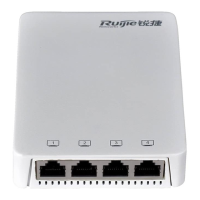Configuration Guide Configuring NTP
NTP Server
A device uses a local clock as the reference clock source to provide time synchronization for other devices in the network.
NTP Client
A device is used as an NTP client that synchronizes time with an NTP server in the network.
Stratum
In NTP, "stratum" is used to describe the hops from a device to an authority clock source. An NTP server whose stratum is 1
has a directly connected atomic clock or radio controlled clock; an NTP server whose stratum is 2 obtains time from the
server whose stratum is 1; an NTP server whose stratum is 3 obtains time from the server whose stratum is 2; and so on.
Therefore, clock sources with lower stratums have higher clock precisions.
Hardware Clock
A hardware clock operates based on the frequency of the quartz crystal resonator on a device and is powered by the device
battery. After the device is shut down, the hardware clock continues running. After the device is started, the device obtains
time information from the hardware clock as the software time of the device.
Overview
Network devices synchronize time with their servers or reliable clock sources to implement
high-precision time correction.
NTP Security
Authentication
The NTP packet encryption authentication is used to prevent unreliable clock sources from time
synchronization interference on a device.
An Access Control List (ACL) is used to filter sources of received NTP packets.
13.3.1 NTP Time Synchronization
Working Principle
NTP time synchronization is implemented by interaction of NTP packets between a client and a server:
The client sends a time synchronization packet to all servers every 64 seconds. After receiving response packets from
the servers, the client filters and selects the response packets from all servers, and synchronizes time with an optimum
server.
After receiving the time synchronization request packet, a server uses the local clock as the reference source, and fills
the local time information into the response packet to be sent to the client based on the protocol requirement.
Figure 13-4 shows the format of an NTP time synchronization packet.
Figure 13-4 Working Principle of NTP

